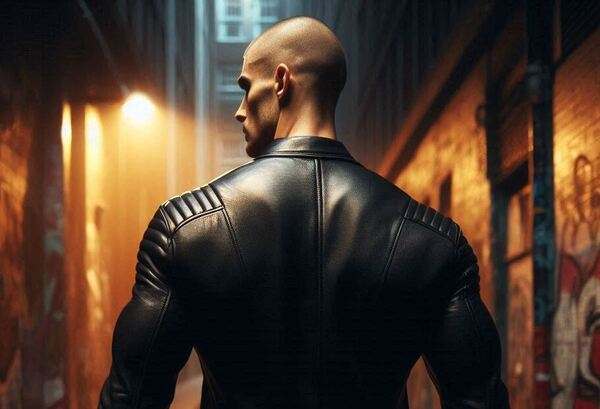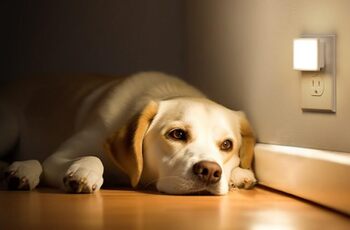Frankly, nothing sparks more irrational panic than what we think we see in the dark. Is that a coat rack or the Grim Reaper? Did the floor just creak, or is the ghost of your late-night snacking guilt finally coming to haunt you? Darkness does things to your brain, and suddenly, you’re questioning your life choices. But when this fear starts defining your behavior, it’s worth asking: what flavor of darkness anxiety are you dealing with - nyctophobia or scotophobia?
Of course, we’re going to examine this issue with the gravity it deserves: none. Why? Because laughter is the only way to survive the terror of your cat knocking over a glass at 3 a.m.
The Great Darkness Debate
You’re sitting in a dark room because someone thought mood lighting was a good idea. The TV’s off, and the silence is deafening. Suddenly, every horror movie you’ve ever seen comes to life in your mind. Your brain helpfully reminds you that nothing good ever happens when the lights are out.
This is exactly the fear spectrum. If you’re someone who panics when the sun sets and streetlights flicker on, congratulations - you could be dealing with nyctophobia. This flavor is all-encompassing, treating night as a villain in every sense. You’re the person who sprints to the car after sunset as though a shadow has a vendetta against you.
Now, if your terror kicks in only in complete, inky-black darkness - say, in a basement or a room with blackout curtains - you’re leaning into scotophobia territory. Unlike nyctophobia’s broader fear of nighttime, scotophobia is all about the absence of light itself. You might be fine at dusk, but drop the lights to zero, and you’re suddenly starring in your own psychological thriller.
Nyctophobia, Scotophobia, Achluophobia, and Lygophobia
The terms all refer to fear associated with darkness but differ slightly in focus and context. Here’s how they are distinct:
1. Nyctophobia: Fear of Night or Darkness
This is the general and most commonly recognized fear of darkness or night. It often stems from a fear of what might be hiding or unknown in the dark.
Characteristics:
- Linked to a broader fear of night or nighttime environments.
- May be associated with bedtime, nocturnal settings, or outdoor spaces after dark.
- Often develops in childhood and can persist into adulthood if untreated.
Example Context: A person with nyctophobia might feel intense anxiety as soon as the sun sets, especially if they are alone or outdoors.
2. Scotophobia: Fear of Darkness
This term also refers to fear of darkness but is often used interchangeably with nyctophobia. Historically, it has been associated with fear of the dark in spiritual or religious contexts.
Characteristics:
- The focus is on the absence of light and what the darkness might conceal.
- Sometimes interpreted as having roots in cultural or spiritual fears (e.g., fear of evil spirits).
Example Context: Someone with scotophobia might avoid unlit rooms or feel uneasy during power outages, interpreting the dark as inherently threatening.
3. Achluophobia: Fear of Darkness or Dim Light
This fear is specifically tied to the lack of sufficient light rather than complete darkness. It reflects discomfort with dim or obscured visibility.
Characteristics:
- Focuses on situations where visibility is poor but not necessarily pitch black.
- Related to feelings of helplessness or vulnerability in reduced lighting.
Example Context: A person with achluophobia might feel panicked in a dimly lit theater or a cloudy evening outdoors when lighting becomes low.
4. Lygophobia: Fear of Twilight or Shadows
This phobia specifically targets transitional lighting conditions, such as twilight or the presence of shadows, where light and dark intermingle.
Characteristics:
- Fear is linked to the ambiguity of partial light and shadowy conditions.
- Often tied to a fear of what might be lurking or obscured by shadows.
Example Context: Someone with lygophobia could feel anxiety at dusk when shadows grow longer or in environments where light casts unpredictable shadows, like forests or dimly lit rooms.
Nighttime Shenanigans: How It Plays Out
Let’s dive into what life looks like when darkness has a chokehold on your psyche. First, you’ll notice your nighttime rituals get a little... eccentric. If you’re nyctophobic, you’re the one who leaves every single light on from the bathroom to the kitchen, creating a well-lit runway to bed. Your electric bill looks like you’re hosting a 24/7 rave, but hey, at least the boogeyman isn’t showing up.
Now imagine a scotophobic scenario. You’re already under the covers, and someone dares to turn off the bedside lamp. Panic sets in immediately. You clutch your phone like it’s a lifeline, using its flashlight to scan the room every five minutes, just in case something new appeared. You’re not entirely convinced that the shadows on the wall aren’t forming alliances.
And let’s not forget the brave attempt to sleep with one eye open. You tell yourself it’s just the dark, but your ears are now on high alert. Every rustle of fabric is amplified to a suspicious level. Did the curtains move? Was that the wind? Or is it the ghost of that sock you lost last week?
The Basement Conundrum
If there’s one place where these fears thrive, it’s the basement. Basements are where dreams go to die and fears come to life. Nyctophobia makes you hesitate at the top of the stairs, debating if you truly need that box of holiday decorations. Is it worth risking your life over festive lights? Probably not. You tell yourself you’ll grab them tomorrow - in daylight.
Meanwhile, scotophobia kicks in once you’re halfway down the stairs, and the lightbulb decides it’s tired of being helpful. Now you’re in full panic mode, gripping the railing like it’s your last connection to sanity. You fumble for your phone, ready to illuminate the darkness, but suddenly the light feels like it’s not enough. Every shadow morphs into something sinister. That pile of laundry in the corner? Definitely alive.
Basements are the ultimate battleground for darkness-related fears. And let’s be honest, no amount of rational thinking will convince you that nothing’s hiding in the far corner.
Night Lights: The Unsung Heroes
If you suffer from either of these fears, night lights are your MVPs. They’re like tiny, glowing sentinels keeping the darkness at bay. Nyctophobia sufferers scatter them like breadcrumbs throughout the house, creating a path of comfort. You’re not taking any chances on encountering a dark hallway.
For scotophobia, night lights serve as the perfect compromise. They’re just enough to soften the pitch-black void but not so bright that you feel like you’re trying to sleep under stadium lights. That soft glow becomes your best friend, especially during those midnight bathroom trips.
Of course, there’s always the moment you forget to plug in a night light. Cue the frantic search for your phone’s flashlight, accompanied by a whispered, “Why do I do this to myself?” as you stumble into furniture.
The Social Aspect: Explaining Your Fear
Let’s face it, discussing a fear of darkness isn’t easy. People love to brush it off with helpful comments like, “There’s nothing in the dark that isn’t there in the light!” Sure, Susan, but how do you know? Did you personally check under the bed for monsters?
If you’re nyctophobic, social gatherings that stretch past sunset feel like a ticking time bomb. You’re the first to suggest calling it a night, blaming “an early morning” when really, you just don’t want to walk home in the dark. Friends might tease you, but you’ve already calculated the distance to the nearest streetlight and planned your route accordingly.
For scotophobia, the embarrassment comes when you’re staying over at a friend’s house and casually ask, “Do you leave any lights on at night?” You try to downplay the fear, but deep down, you know you’ll be clutching your phone like a nightlight. They don’t need to know you also brought a flashlight “just in case.”
Facing the Fear
Here’s the twist: fear of darkness doesn’t magically disappear. It evolves, manifesting in different ways. Nyctophobia might convince you to buy blackout curtains just so you can avoid the night sky altogether. Scotophobia might have you triple-checking every light switch before settling down.
But the beauty of these fears is how they keep life... interesting. You’ll never underestimate the comfort of a lamp or the sheer bravery it takes to walk into a dark room. And let’s not forget the adrenaline rush - nothing gets your heart racing like stepping into the void and surviving to tell the tale.
Summary of Key Differences
- Nyctophobia: Broad fear of night or darkness.
- Scotophobia: Focuses on the fear of darkness as threatening or malevolent.
- Achluophobia: Fear of low light or dimness, not complete darkness.
- Lygophobia: Fear of twilight, shadows, or transitional lighting.
Each term highlights a unique nuance of darkness-related fears, reflecting variations in perception and triggers. With that said, nyctophobia and scotophobia are just part of the human experience.
Sure, they make you look over your shoulder more often than necessary, but they also make for great stories. So the next time you find yourself panicking in the dark, remember: at least you’re not alone. Somewhere out there, someone else is also staring at their coat rack, wondering if it’s about to attack.






